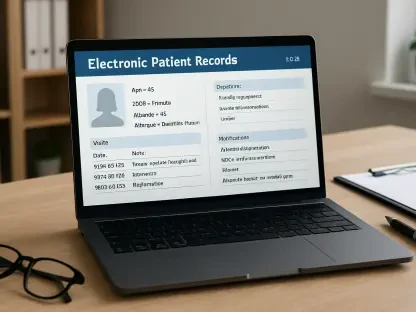Cuba is known for its comprehensive healthcare system and advances in medical research. However, the nation faces an economic conundrum driving its latest initiative: exporting medical technology, particularly the Infantix device, to international markets. Developed at the Center for Neurosciences of Cuba, this neonatal device offers precision in diagnosing hearing disorders in newborns, setting Cuba apart as an innovator in this medical niche. While Cuba’s move to engage foreign markets like Colombia and Mexico with this cutting-edge technology reveals a strategy aimed at economic recovery, it also raises questions about the nation’s domestic priorities and international ambitions.
The Strategic Export of Medical Equipment
Infantix: A Technological Leap
In recent years, Cuba has embarked on an ambitious journey by launching the export of Infantix to countries like Colombia. This neonatal medical device is adept at analyzing auditory brainstem responses and otoacoustic emissions, enabling healthcare professionals to efficiently distinguish different types of hearing loss in newborns. The sophistication and precision of Infantix reflect Cuba’s commitment to maintaining a foothold in global health technology markets. The process of securing health registration in Colombia not only highlights Cuba’s efforts to enhance credibility and trust in its product but also underscores its dedication to addressing pediatric hearing issues globally.
The presence of Infantix in foreign markets extends beyond Colombia into Mexico, illustrating a strategic deployment serving as a blueprint for future expansions. By entering a market blessed with diverse needs and dynamic healthcare demands, Cuba positions itself advantageously. These international ventures offer Cuba both cultural and economic exchange opportunities. They also provide a platform for Cuban technology to be recognized and utilized globally, feeding back into the country’s core economic revitalization goals. The successful deployment and acceptance of Cuban medical equipment mark notable strides toward economic stabilization despite the island’s enduring financial challenges.
Aligning Healthcare Ambitions with Economic Necessity
A significant aspect of Cuba’s medical export strategy is its biotechnology and pharmaceutical agreement with Maricá, Brazil, emphasizing the collaborative potential between nations. Through this agreement, Cuban medicines are jointly produced in Brazil, leveraging Cuban ingenuity and Brazilian infrastructure. The blend of Cuban technology with Brazilian resources exemplifies a practical approach to international collaboration, tapping into the strengths of both nations. This partnership reflects a broad vision of integrating Cuban health advances into settings that offer substantial manufacturing support, simplifying logistics and minimizing production costs.
However, this external focus does not come without internal repercussions. Domestic shortages in medical supplies highlight a critical tension in Cuba’s economic and healthcare strategies. While exporting cutting-edge technology to generate foreign revenue is vital for the Cuban economy, it inadvertently raises concerns about prioritization. These decisions pose a dilemma, balancing international economic engagements with the need to sustain robust domestic healthcare services. Despite these challenges, Cuba remains resolute in widening its international medical footprint, seen as integral to its economic recovery strategy. This dual focus underscores the complexity of Cuba’s pursuit of economic stability through global medical outreach.
Balancing Global Ambitions and Domestic Priorities
Economic Goals Versus Healthcare Realities
The driving force behind Cuba’s medical export strategy is its economic landscape, demanding innovative solutions amidst prevailing challenges. Exporting medical equipment like Infantix is a deliberate attempt to diversify income streams and attract foreign currency, crucial for a country facing financial constraints. This strategic move aims to counterbalance economic difficulties while simultaneously promoting indigenous medical innovations. Through exporting high-demand technology, Cuba hopes to reinforce its economic foundation by building a reputable global presence in the healthcare sector. This strategy highlights Cuba’s adaptability and resilience despite its economic difficulties.
Yet, such initiatives invite scrutiny regarding how these international pursuits might overshadow local healthcare needs. The intricacies involved in translating international successes into domestic well-being require careful navigation by Cuban authorities. The country’s determined effort to forge international alliances showcases its commitment to innovative and sustainable economic models. Nonetheless, any progress on the global front could risk overshadowing immediate domestic concerns such as healthcare accessibility, resource allocation, and personnel retention. These challenges solicit ongoing attention to strike a strategic balance between economic ambition and maintaining quality local health services.
A Nuanced Approach to Sustaining Growth
Cuba’s strategy of expanding its international presence through medical exports mirrors broader economic intentions to solidify long-term growth. However, the journey involves reconciling international ambitions with national responsibilities. The dual focus necessitates that Cuba adopt a nuanced approach to leverage foreign market entry to bring tangible benefits back home. Capital gained through medical exports has the potential to improve the infrastructure necessary for addressing domestic health challenges, thus supporting the broader populace. Moreover, success in global markets reinforces Cuba’s capacity to invest in future research and development initiatives, creating a beneficial cycle.
Ensuring that the international achievements of Cuba’s medical export efforts translate meaningfully into domestic gains poses both a challenge and opportunity. It is critical for Cuban policymakers to frame attractive and sustainable policies that guide their expansion strategy while fostering domestic development. Pursuing this delicate equilibrium can enhance the nation’s standing as a leader in healthcare innovations, providing long-term economic benefits and, ultimately, aligning with the goals of improved healthcare outcomes locally. Strategically ensuring that international ventures promote local advancement is crucial in securing Cuba’s economic recovery and stability.
The Road Ahead for Cuba’s Economic Strategy
Cuba has long been recognized for its thorough healthcare system and advancements in medical research. Yet, the country is facing an economic dilemma that has led to its latest venture: exporting medical technology, such as the Infantix device, to global markets. This neonatal device, created at the Center for Neurosciences of Cuba, excels in accurately diagnosing hearing disorders in newborns, positioning Cuba as a pioneer in this specific medical field. By reaching out to international markets like Colombia and Mexico with this state-of-the-art technology, Cuba is not only seeking economic revitalization but also highlighting its ability to innovate despite financial constraints. However, this move has sparked discussions regarding Cuba’s domestic priorities and its aspirations on the world stage. How Cuba balances exporting its technological prowess with addressing its internal needs could redefine its economic landscape and global reputation moving forward. The nation’s strategy showcases both ambition and the pressing need to adapt economically.









